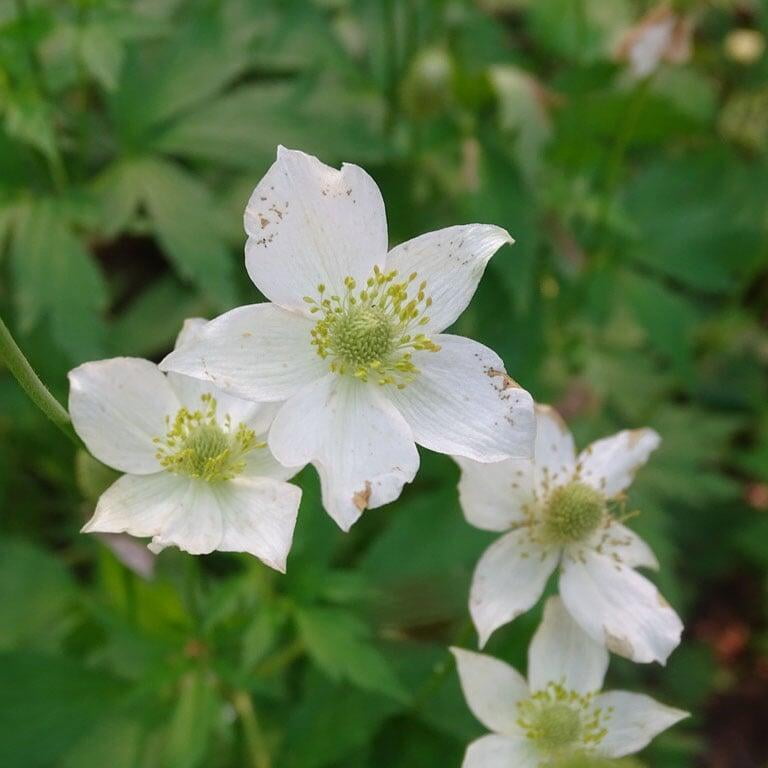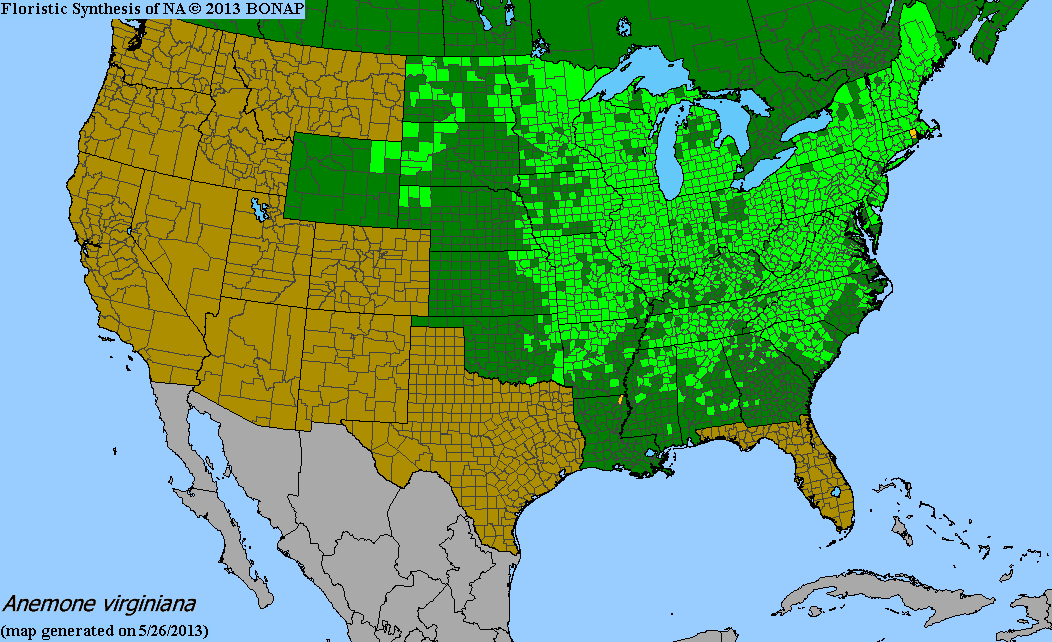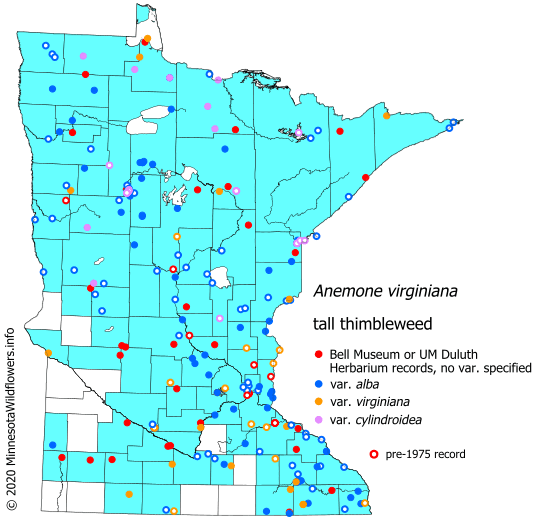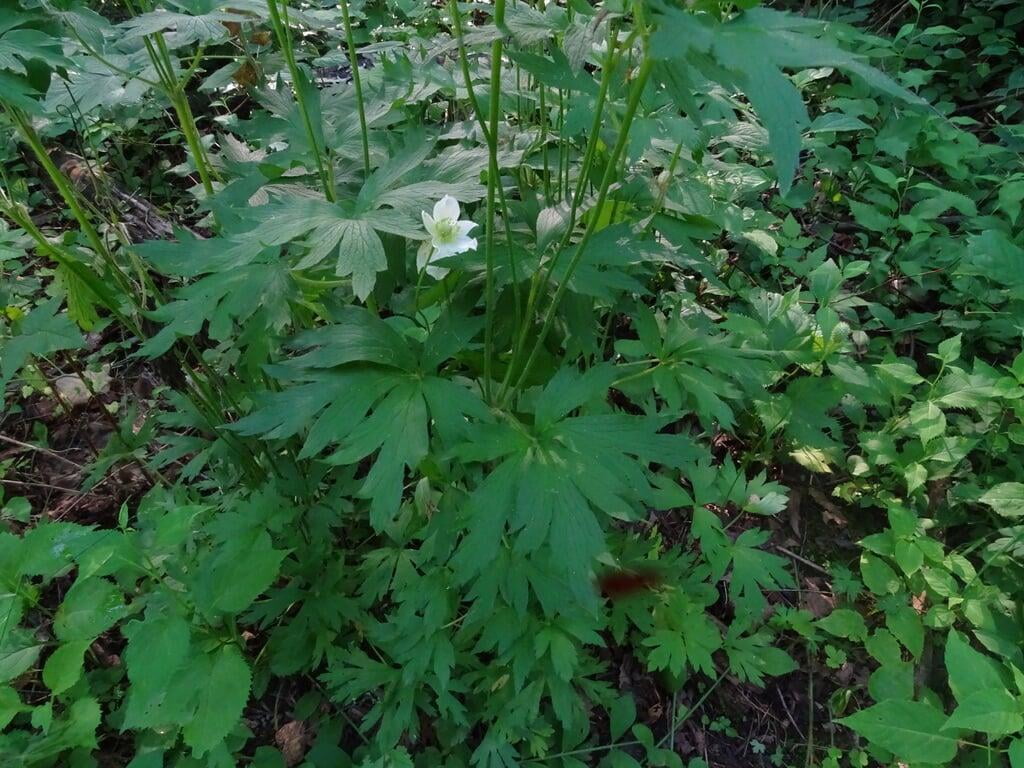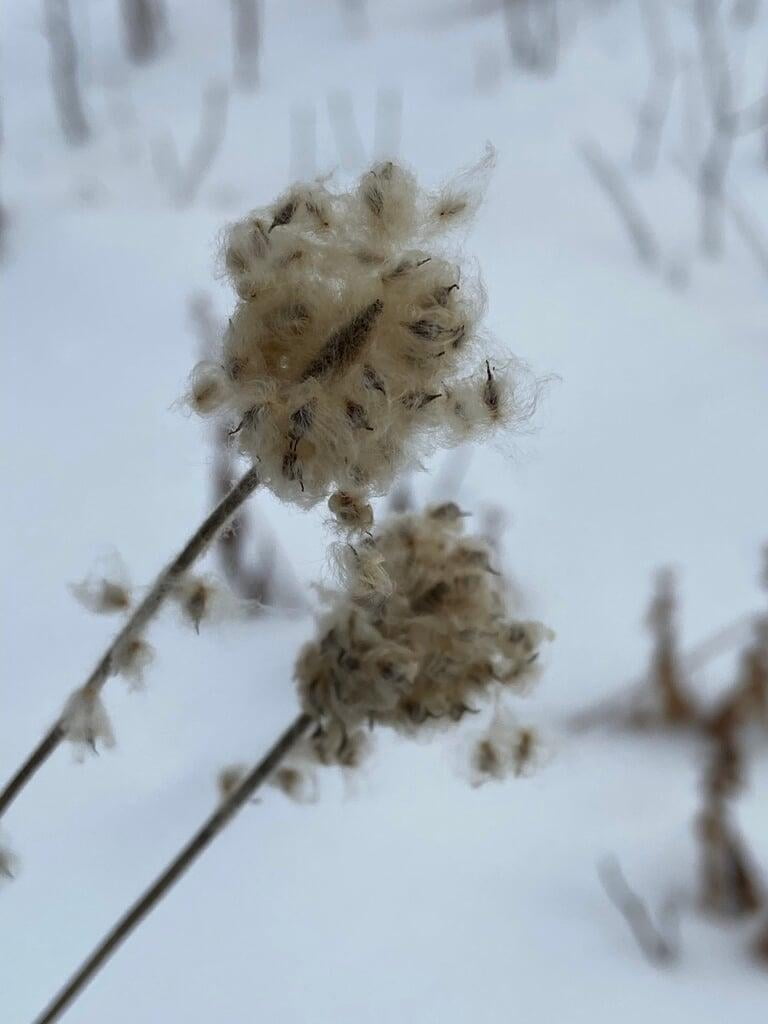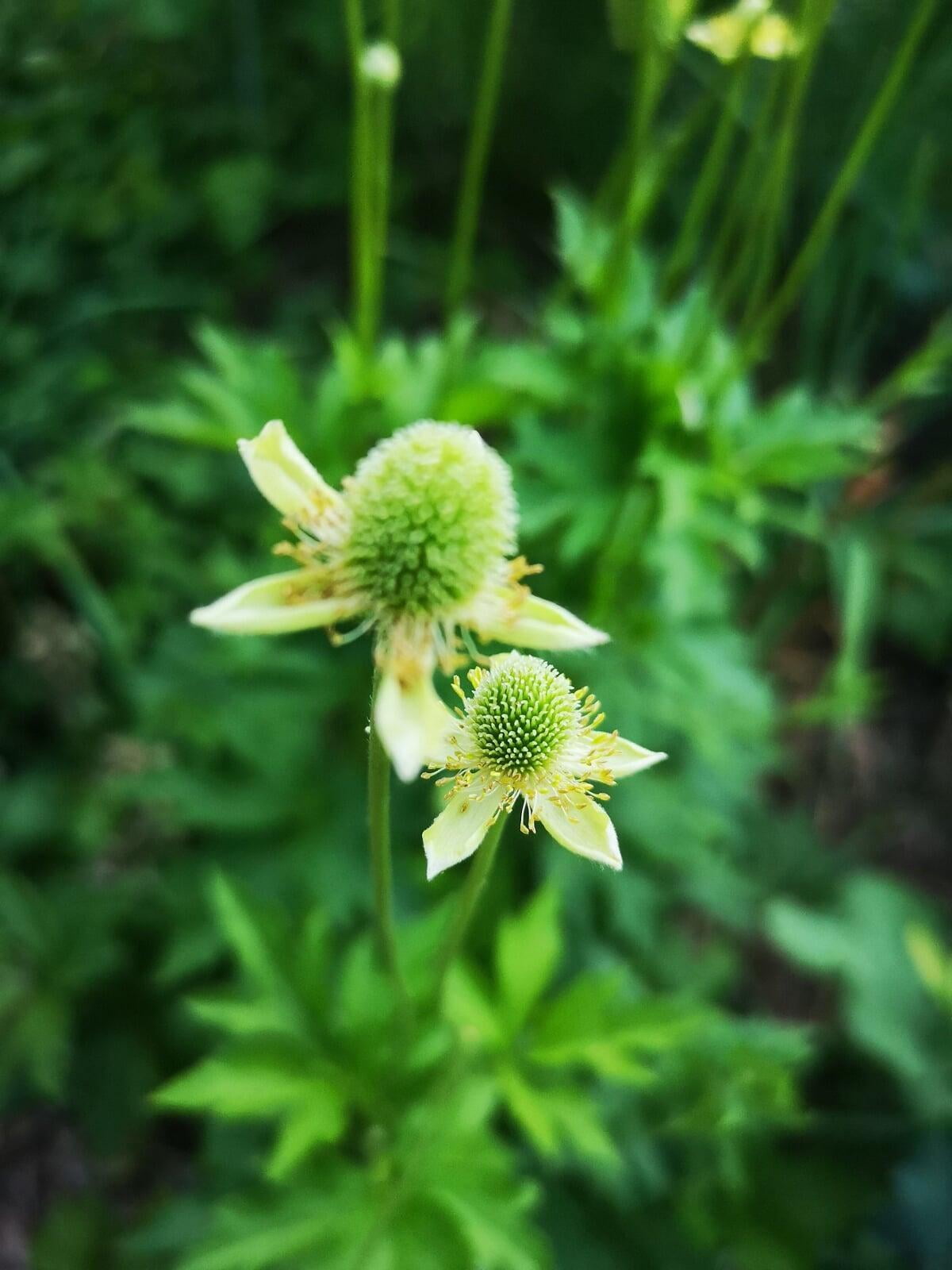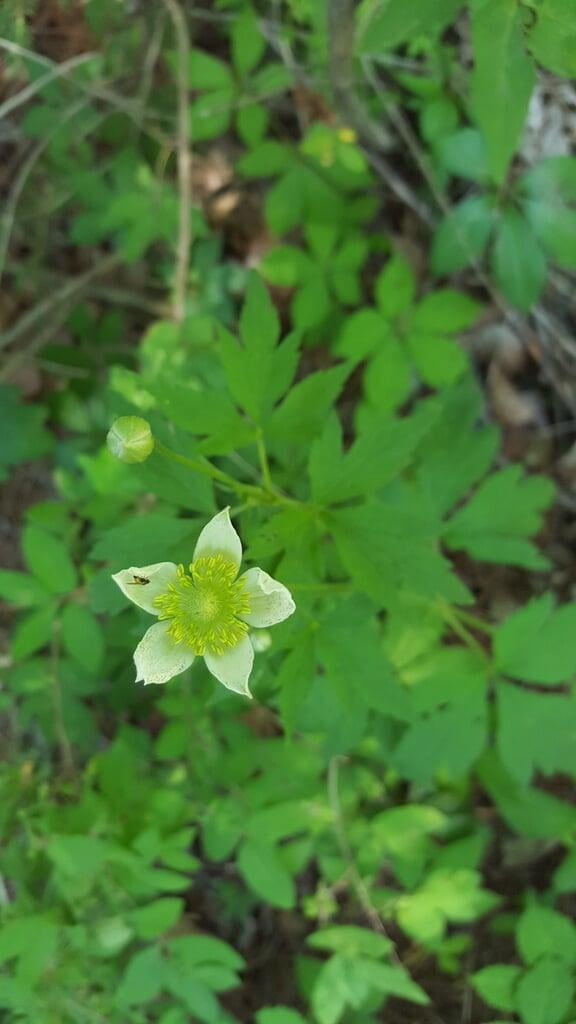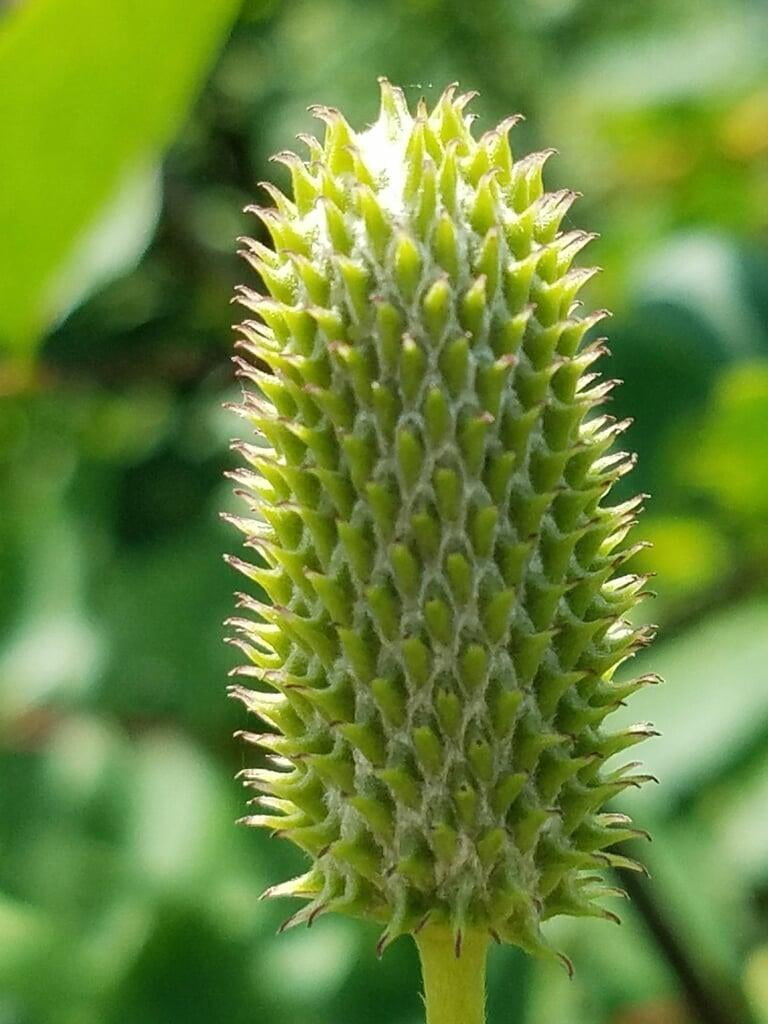Anemone virginiana
Tall thimbleweed Description:
Anemone virginiana, also known as tall thimbleweed or Virginia anemone, is a tall and slender herbaceous perennial that typically grows to a height of 1-4 feet. It has a clumping growth habit and produces upright, branching stems that bear clusters of delicate white flowers in the summer.
The leaves of Anemone virginiana are deeply lobed and divided, and are typically green in color with a slightly bluish tinge. The foliage is attractive and ornamental, and provides a beautiful backdrop for the delicate white flowers.
The flowers of Anemone virginiana are borne in loose clusters at the top of the stems, and are made up of five to ten petal-like sepals that are white in color. The flowers have a delicate, papery texture and are about 1-2 inches (2.5-5 cm) in diameter. They are attractive to a variety of pollinators, including bees and butterflies.
Anemone virginiana is native to the eastern regions of North America, where it can be found in woodland areas, meadows, and along roadsides. It prefers well-drained soils and partial to full sun, making it an excellent choice for woodland gardens and mixed borders. Anemone virginiana is a summer-blooming plant, and it can be used to extend the blooming season in the garden. The plant is easy to grow and maintain, and it can be left in place to naturalize over time.
Native Range:
Tall thimbleweed is found mostly in the central and eastern United States. It's Western most native region can be found in Wyoming.
Standard Plant Information:
Plant Height: 1' - 4'
Bloom Time: June - August
Preferred Habitat: Does well in part shade in dry and open woodland.
Sowing:
For most homeowners, the best option is to scatter seed on the ground by hand broadcasting at a minimum of 16-64 pls ounces per acre. For even coverage, we recommend that you broadcast seed in perpendicular rows across the site to ensure even coverage.
You’ll want to broadcast any grass seed first, which will get raked into the soil lightly. Next, it is ideal to mulch the area lightly with either a clean (no seed) straw or preferably with our native Little Bluestem straw, sold at our retail garden centers. After a light mulching is complete, now it’s time to broadcast your native wildflower seeds, which should not be raked into the soil. A good rain or watering is sufficient to cover the seed.
Planting:
Simply dig a hole in the soil slightly larger than the plant’s roots. Ensure that the soil line of the plant is maintained during the transfer (i.e. the plant should be at the same level with the ground as it was in the pot). Pack any loose dirt back around the plant and make sure you water it well the same day to ensure it has the best chance of survival.

